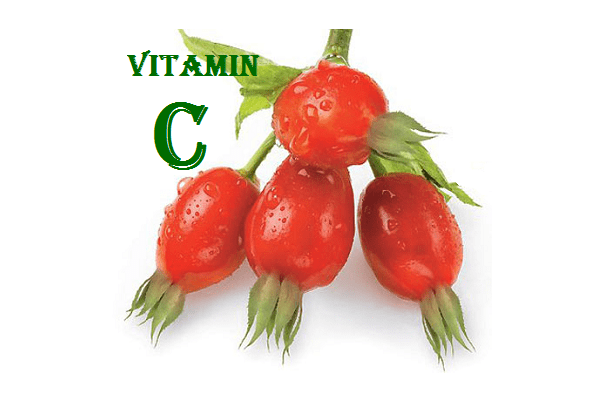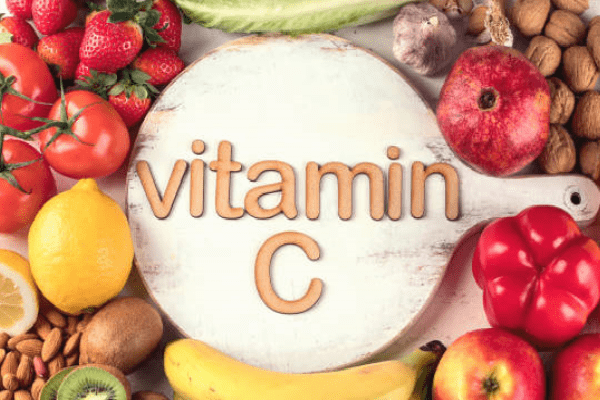Vitamins and minerals >>>> Ascorbic acid (vitamin C)
Ascorbic acid (vitamin C).

Ascorbic acid is a compound synthesized by plant organisms. In animals, the synthesis of compounds of ascorbic acid is not significant (its presence was found in the adrenal glands, kidneys and liver), which makes it an especially necessary element of nutrition for animals and humans. In nature, four isomers of ascorbic acid have been found: L-ascorbic acid, L-isoascorbic acid, D-ascorbic acid, D-isoascorbic acid. Only one of the isomers is considered biologically active - L-ascorbic acid, which is called "vitamin C". L-isoascorbic acid is used industrially as a food additive E315. In the plant kingdom, vitamin C is synthesized from glucose, galactose and other hexoses. In the body of primates, vitamin C is not synthesized.

The role of vitamin C in biochemical processes has been of great interest to scientists for many years. It is considered responsible for the regenerative and antioxidant properties of the body, its participation as a coenzyme in some metabolic processes has been proven , its presence in the required amount in the body has a beneficial effect on the formation of bone and connective tissue. It is assumed that vitamin C plays a certain anti-cancer role by slowing down the growth of cancer cells (experiments were carried out in mice). The powerful antioxidant properties of vitamin C made it possible to use it as an antitoxic agent that deactivates some harmful substances.
To this day, there is a debate about the optimal daily dosages of ascorbic acid. The most well-established scheme for taking vitamin C per day:
- Healthy adult - 90 mg,
- Nursing mothers and pregnant women - up to 100-120 mg,
- An adult during a period of illness - the dose is changed according to the doctor's prescription and according to the existing diseases,
- Athletes during training - up to 140-200 mg,
- Athletes during the competition period - up to 200-400 mg.
Children and adolescents:
- Complementary infants - 30-40 mg,
- Infants under one year old - 50 mg,
- Children under three years old - 15 mg,
- Children under eight years old - 25 mg,
- Teenagers under 14 years old - 45 mg,
- Teenagers under 18 years old - 65-75 mg.
Properties of ascorbic acid
- Responsible for the activation of immune reactions during the period of illness, stress, physical overload (affects the production of interferons);
- Participates in regeneration processes during the period of injury to various tissues of the body;
- Responsible for the condition of the vascular wall and collagen production;
- Influences the resorption of bone tissue, accelerating the processes of remodeling of bone structures;
- Takes part in the production of certain hormones (steroid hormones);
- Responsible for the transparency of the lens and the state of the cornea;
- Regulates oxidation processes in the body and is considered an effective detoxifier.
Ascorbic acid compounds are unstable, they are destroyed by light and high temperature. Vitamin C is destroyed especially quickly with small cutting of vegetables and fruits, since plants secrete at this moment the enzyme ascorbate oxidase, which destroys the compounds of ascorbic acid. In the air, another chemical reaction occurs, catalyzed by the plant enzyme phenolase, which destroys ascorbic acid, it is for this reason that vegetables and fruits containing ascorbic acid darken in air at the cuts. Ascorbic acid actively interacts with iron and copper ions, for this reason, vegetables and fruits should not be cooked from these compounds in dishes. Ascorbic acid stays well in the cold (fruits and vegetables frozen) and in a dark place.
In the body, ascorbic acid, which does not participate in biochemical reactions, is not retained and is quickly excreted in the urine in the form of oxalic acid, which can stimulate stone formation in the urinary system. When interacting with some drugs (barbiturates), the rate of excretion of ascorbic acid increases. When used together, it reduces the effect of antidepressants. Poorly combined with acetylsalicylic acid. Vitamin C is not combined with vitamin B12, but mutually enhances the effect of vitamin E. It has a beneficial effect on the absorption of iron in the gastrointestinal tract.
Vitamin C content in plant foods:
- Rosehip - 1000 mg / 100g dry matter,
- Guava - 300 mg / 100g dry matter,
- Sweet pepper - up to 250 mg / 100g dry matter,
- Black currant - 200 mg / 100g dry matter,
- Cabbage - up to 190 mg / 100g dry matter,
- Kiwi - up to 180 mg / 100g dry matter,
- Broccoli - up to 170 mg / 100g dry matter,
- Brussels sprouts - up to 150 mg / 100g dry matter,
- Strawberries - strawberries - up to 90 mg / 100g dry matter,
- Citrus fruits up to 80 mg / 100g dry matter.
As a food supplement, ascorbic acid is present in various vitamin complexes, and is also sold in the form of pills or in tablet form in combination with another useful substance rutin (synonyms: rutoside, vitamin P) as the drug Ascorutin.
Vitamin C hypovitaminosis can develop during a period when there is not enough fresh fruits and vegetables in the diet, or they have to be consumed boiled as part of the diet. Vitamin C hypervitaminosis is rare and develops mainly as a result of overdose with improper and uncontrolled use of it.

Read

Read


























